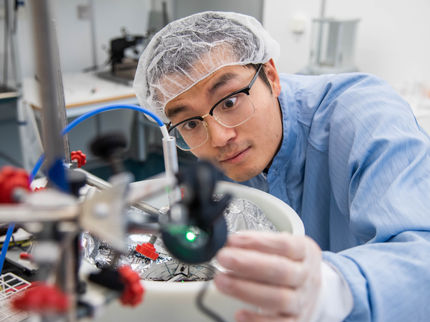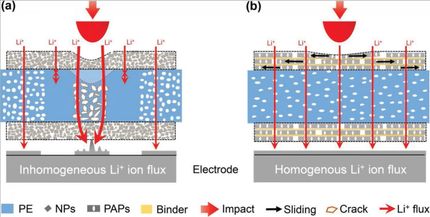New way to make sensors that detect toxic chemicals
Advertisement
Ohio State University researchers have developed a new method for making extremely pure, very small metal-oxide nanoparticles.
They are using this simple, fast, and low-temperature process to make materials for gas sensors that detect toxic industrial chemicals (TICs) and biological warfare agents.
The researchers described their work in a recent issue of the journal Materials Chemistry and Physics.
Patricia Morris, associate professor of materials science and engineering at Ohio State, leads a team of researchers who develop solid materials that can detect toxic chemicals.
The challenge, she said, is to design a material that reacts quickly and reliably to a variety of chemicals, including TICs, when incorporated into a sensor.
"These are sensors that a soldier could wear on the battlefield, or a first responder could wear to an accident at a chemical plant," Morris said.
The material under study is nickel oxide, which has unusual electrical properties. Other labs are studying nickel oxide for use in batteries, fuel cells, solar cells, and even coatings that change color.
But Morris, along with Ohio State doctoral student Elvin Beach, is more interested in how nickel oxide's electrical conductance changes when toxic chemicals in the air settle on its surface. Beach applies a thin coating of the material onto microelectro-mechanical systems (made in a similar fashion to computer chips), with a goal of identifying known toxic substances.
The design works on the same general principle as another, much more familiar sensor.
"The human nose coordinates signals from hundreds of thousands of sensory neurons to identify chemicals," Beach said. "Here, we're using a combination of electrical responses to identify the signature of a toxic chemical."
The key to making the sensor work is how the nickel oxide particles are made. Beach and Morris have devised a new synthesis method that yields very small particles -- which give the sensor a large surface area to capture chemical molecules from the air -- and very pure particles -- which enable the sensor to detect even very small quantities of a substance.
Each particle of nickel oxide measures only about 50 atoms across -- that's equivalent to five nanometers (billionths of a meter).
Beach described the synthesis method in very simple terms. "Basically, you mix everything together in a pressure vessel, pop it in the oven, rinse it off and it's ready to use," he said.
Of course, for the process to go smoothly, the researchers have to meet specific conditions of temperature and pressure, and leave the material in the pressure cooker for just the right amount of time. For this study, they set the pressure cooker to around 225 °C. They found they can make the particles in as little as 12 hours, but no more than 24 hours.
"Too short a time, and the nickel oxide doesn't form -- too long and it reduces to metallic nickel," Beach explained.
After he removes the nickel oxide from the pressure cooker, he washes it in a common solvent called methyl ethyl ketone to free up the nanoparticles.
At that point, the material is ready to use. Most other synthesis methods require another additional step -- a high-temperature heat treatment.
Starting with a microsensor silicon chip array provided by collaborators at the National Institute of Standards and Technology (NIST), Beach adds a layer of particles using a device called a picoliter drop dispenser. A picoliter is a trillionth of a liter.
He describes the dispenser as a kind of inkjet printer that places a droplet of a liquid suspension containing particles onto a surface -- in this case, the chips.
According to Morris, this is the first time that nickel oxide nanoparticles have been applied in this way.
But to Beach, the most important "first" to come out of the study is their discovery of the reaction pathway -- that is, the various chemical steps that take place inside the pressure cooker during the synthesis of the material.
Now that the researchers know the reaction pathway, they can devise ways to add chemical dopants to the nanoparticles. Dopants would change the function of the sensor -- for instance, to speed up the response rate.
A one-gram batch of nickel oxide nanoparticles costs about $5.00 to make; one chip carries four nanograms (billionths of a gram) of material, so each sensor costs only pennies to fabricate.
Other applications could include exhaust or pollution monitoring and air quality monitoring.






























































